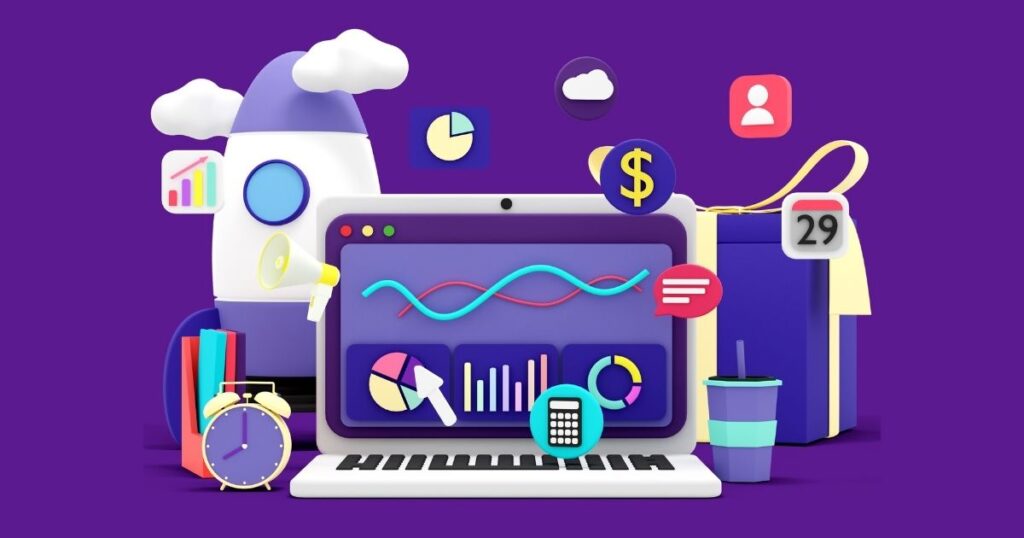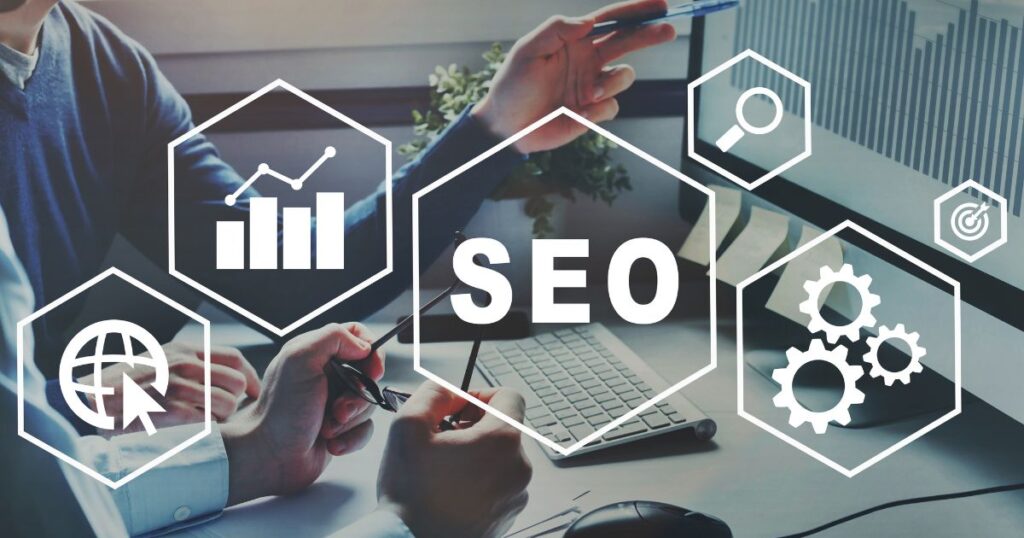In today’s competitive digital landscape, businesses, brands, and companies must leverage every available tool to gain an edge. One of the most effective strategies is Pay-Per-Click (PPC) marketing. If you’re new to PPC, this guide will help you understand what it is, how it works, and why it’s crucial for your business.

What is PPC Marketing?
Pay-Per-Click (PPC) marketing is an online advertising model in which advertisers pay a fee each time their ad is clicked. It’s essentially a way of buying visits to your site rather than attempting to earn those visits organically. PPC is commonly associated with first-tier search engines (like Google Ads) and social media platforms (such as Facebook, LinkedIn, and Instagram).
How PPC Marketing Works
At its core, PPC marketing involves creating ads and bidding on specific keywords. When users enter search terms that match your keywords, your ad appears in the search engine results or on a social media platform. If the user clicks on your ad, you pay a fee. The goal is to ensure that the fee you pay per click is insignificant compared to the value of the resulting conversion.
Types of PPC Ads
PPC encompasses various types of ads, each suited to different marketing goals and platforms:
1.- Search Ads: These are text ads that appear on search engine results pages (SERPs). They are triggered by keywords that users search for, making them highly relevant and targeted.
2.- Display Ads: These are visual ads, including banners and images, that appear on websites within the Google Display Network. They are useful for brand awareness and retargeting.
3.- Social Media Ads: These ads appear on social media platforms like Facebook, Instagram, LinkedIn, and Twitter. They can be in the form of images, videos, or carousel ads and are targeted based on user demographics, interests, and behaviors.
4.- Shopping Ads: These ads appear on search engines and display product images, prices, and store information. They are particularly effective for e-commerce businesses.
5.- Video Ads: These are short video clips that appear on platforms like YouTube and Facebook. They are ideal for engaging audiences and conveying messages quickly.

Why PPC Marketing is Important for Businesses
PPC marketing offers numerous benefits that make it indispensable for businesses aiming to succeed online. Here’s why it’s crucial:
1. Immediate Results
Unlike SEO, which can take months to show results, PPC campaigns can drive traffic to your website almost immediately. This is particularly useful for businesses looking to generate quick leads, promote time-sensitive offers, or increase visibility during a product launch.
2. High Targeting Precision
PPC allows you to target specific demographics, geographic locations, devices, and even times of the day. This level of precision ensures that your ads are shown to the most relevant audience, increasing the likelihood of conversions.
3. Budget Control
One of the significant advantages of PPC is the ability to control your budget. You can set a daily or monthly limit on how much you’re willing to spend. This makes PPC accessible to businesses of all sizes, from small startups to large enterprises.
4. Measurable Results
PPC provides detailed analytics and reporting, allowing you to measure the performance of your campaigns in real-time. Metrics such as impressions, clicks, click-through rates (CTR), and conversions give you insights into what’s working and what’s not, enabling you to optimize your strategy for better results.
5. Brand Exposure
Even if users don’t click on your ads, seeing your brand name and message increases brand awareness. Over time, repeated exposure can lead to higher brand recognition and trust, which are essential for long-term success.
6. Complementary to Other Marketing Strategies
PPC works well alongside other marketing strategies, such as SEO, content marketing, and social media marketing. It can help boost the visibility of your content, drive traffic during SEO build-up periods, and support overall digital marketing efforts.

Getting Started with PPC Marketing
For beginners, starting with PPC marketing might seem daunting. However, breaking it down into manageable steps can simplify the process.
1.- Define Your Goals
Before launching a PPC campaign, it’s crucial to define your goals. Are you aiming to increase website traffic, generate leads, boost sales, or promote brand awareness? Your goals will determine the type of PPC ads to use, the platforms to focus on, and how you measure success.
2.- Conduct Keyword Research
Keywords are the foundation of PPC marketing. Use tools like Google Keyword Planner, SEMrush, or Ahrefs to identify relevant keywords for your business. Look for keywords with high search volume and low competition to maximize your chances of success.
3.- Choose the Right Platform
Selecting the appropriate platform depends on your audience and goals. Google Ads is ideal for search and shopping ads, while Facebook and Instagram are perfect for social media campaigns. LinkedIn is best for B2B marketing, and YouTube is great for video ads.
4.- Create Compelling Ads
Your ads should be engaging, relevant, and have a clear call to action (CTA). For search ads, focus on writing concise headlines and descriptions that include your keywords. For display and social media ads, use high-quality images or videos that capture attention.
5.- Set Your Budget and Bids
Decide on your budget and bidding strategy. Google Ads offers various bidding options, such as cost-per-click (CPC), cost-per-thousand-impressions (CPM), and cost-per-acquisition (CPA). Choose the one that aligns with your goals and monitor your spending to ensure you stay within your budget.
6.- Launch and Monitor Your Campaign
Once your campaign is live, regularly monitor its performance using the analytics provided by the platform. Pay attention to key metrics like CTR, conversion rate, and return on ad spend (ROAS). Use this data to make informed adjustments to your campaign for better results.
7.- Optimize and Scale
PPC marketing is not a set-it-and-forget-it strategy. Continuously optimize your campaigns by testing different ad copy, adjusting bids, and refining your targeting. As you gather more data, scale your successful campaigns to increase your reach and impact.

Common PPC Mistakes to Avoid
While PPC marketing offers numerous benefits, there are common pitfalls to watch out for:
1. Ignoring Negative Keywords
Negative keywords prevent your ads from appearing for irrelevant searches. Failing to use negative keywords can lead to wasted spend and lower ROI. Regularly update your negative keyword list based on search term reports.
2. Poor Ad Copy
Your ad copy should be clear, relevant, and compelling. Avoid vague or generic language and ensure your ads address the needs and pain points of your target audience. A strong CTA is essential for driving clicks
3. Neglecting Mobile Optimization
With the majority of searches happening on mobile devices, it’s crucial to optimize your ads and landing pages for mobile. Ensure your website loads quickly and offers a seamless experience on all devices.
4. Not Testing and Experimenting
PPC success often comes from experimentation. Test different ad variations, bidding strategies, and targeting options to find what works best for your business. A/B testing can provide valuable insights into what resonates with your audience.
5. Overlooking Landing Page Experience
Driving traffic to your site is only half the battle. Ensure your landing pages are optimized for conversions. They should be relevant to the ad, load quickly, and have a clear CTA. A poor landing page experience can result in high bounce rates and wasted ad spend.

PPC vs. SEO: Understanding the Difference
While both PPC and SEO aim to drive traffic to your website, they are fundamentally different strategies.
PPC
Immediate Results: PPC campaigns can drive traffic almost instantly once they’re live.
Paid: You pay for each click on your ads, making it a paid marketing strategy.
Targeting: Highly precise targeting options based on demographics, location, device, etc.
Control: Complete control over your budget, ad copy, and targeting.
Short-Term: PPC campaigns can be turned on or off at any time, making them flexible for short-term goals.
SEO
Long-Term Results: SEO efforts take time to show results, often several months.Organic:
SEO focuses on improving organic search rankings without direct payments for clicks.
Broad Reach: Reaches a wider audience without the same level of precise targeting as PPC.
Authority Building: Helps build long-term credibility and authority in your industry.
Ongoing Effort: Requires continuous effort and optimization to maintain and improve rankings.

Combining PPC and SEO
The most effective digital marketing strategies often combine both PPC and SEO. While PPC offers immediate traffic and quick results, SEO builds a sustainable, long-term online presence. Using PPC to drive traffic while working on SEO can provide the best of both worlds.
Conclusion
PPC marketing is a powerful tool that offers immediate results, precise targeting, and measurable outcomes. For beginners, it might seem complex, but by following the steps outlined in this guide, you can start harnessing the potential of PPC to drive traffic, generate leads, and grow your business.
Understanding the importance of PPC, along with avoiding common mistakes and continuously optimizing your campaigns, will ensure you get the most out of your investment. Remember, the key to success in PPC marketing lies in testing, analyzing, and adapting to the ever-changing digital landscape.
Whether you’re a small startup or a large enterprise, PPC marketing can provide the boost you need to stand out in the competitive online market. Start exploring the world of PPC today and watch your business reach new heights.
